|
|
Home →
Survival →
Fire →
Tinder
Making "Char"
Photos and text by Rob Bicevskis |
|
|
|
Various books and other documents often refer to something called "Char."
This page gives some background on char and describes a few ways
of making it. |
|
|
|
Why do we want char? Often in primitive skills, or
survival situations, one is faced with trying to catch a
small spark in order to turn it into a larger coal and
ultimately into a fire. Have a look at the page on
Fire-
Flint & Steel (on this website).
View the video from the
June 2002
meeting of Wildwood Trackers
(about 2/3 of the way down the page). There
are precious few substances that will easily catch sparks
thrown from flint and steel. Char is one substance that
does work well.
|
|
|
| What is char? The process
involved in making char is akin to making "coke" from "coal."
In essence, some organic matter is heated to high temperatures
in an environment devoid of oxygen. In this process, all sorts
of volatiles are driven off from the base material leaving only
carbon. If you would like more information, looking into
how "coke" is made.
|
|
|
|
Making Char |
|
|
|
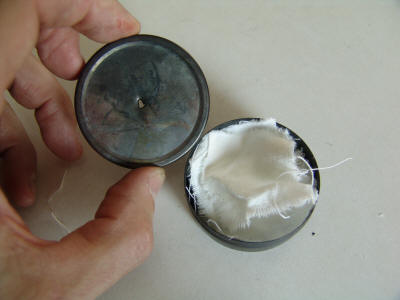 |
Making char
is very easy. The simplest approach is to take
some cotton cloth. The cloth is torn into
squares, and placed into a small tin. A
small hole is made in the top of the tin.
|
|
|
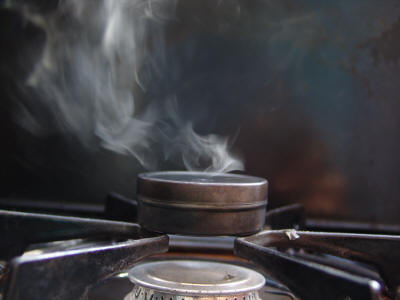 |
The tin is then
heated. In this picture, a BBQ was used.
The tin can also be placed onto hot coals from a
fire etc. After a few minutes, white smoke
will start coming from the hole. This smoke
contains much of the stuff that is in cotton that is
not carbon. |
|
|
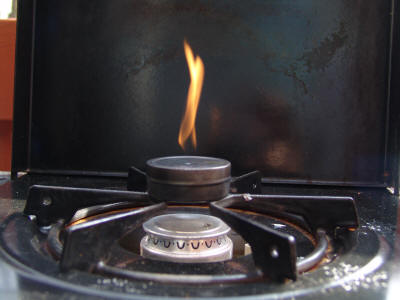 |
The "volatiles" that
are in the smoke are flammable. After a few
more minutes, the smoke will probably light and
burn. This is fine. Since there is no
oxygen in the tin, the carbon from the cotton is not
burned. Continue heating the tin until there
is no more smoke or flames. After this, keep
the tin closed and let it cool. If the tin is
opened too soon, the char inside may ignite. |
|
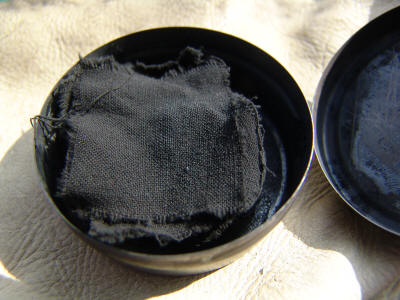 |
After the cooling-off
period, the tin is opened to reveal the transformed
cotton. In this state, the cotton char is quite
fragile, but very useful. |
|
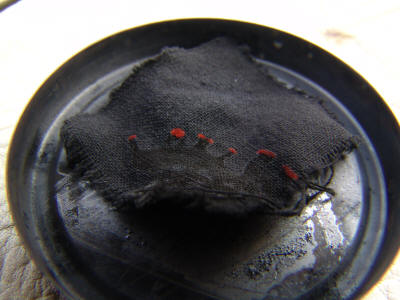 |
This photo shows a
piece of the char "burning." |
|
|
|
|
Another Way of Making Char |
|
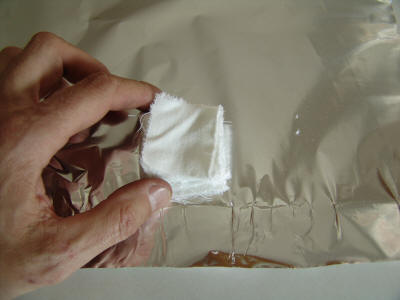 |
These two photos show an alternate way of making char.
Instead of using a tin for the process, one can warp the cotton in some foil.
The foil needs to be folded into an "air tight" packet. As with the tin,
the foil packet needs to have a hole to let the gases escape. If the hole
is too big, or the packet too leaky, the char may ignite. |
|
|
|
|
|
|
Final Notes Make sure that you use pure cotton for making char. If there are added
synthetic materials, then one will usually end up with either black ash, or some
other unidentifiable guck in the tin.
Char can be also be made "on-the-fly." Take a larger piece of cotton and
set it aflame. Once flaming, throw it to the ground and stomp on it until
the flames go out. The "charred" edges of the cotton are lower quality
"char."
Materials other than cotton can be used for char. Experiment with some
punky wood or other "organic" materials.
The coarseness of the original cotton material will affect the "sensitivity"
of the char. I.e. a thin cotton T-shirt will produce a char which will
readily catch small delicate sparks. This char will also be very fragile.
Char make from heavy material - say blue jeans, will be more robust, but it will
usually require a larger spark in order to light.
Char works will with flint-and-steel, in fire pistons etc. I have not
been able to catch sparks from pyrites. |
|
|
|
|